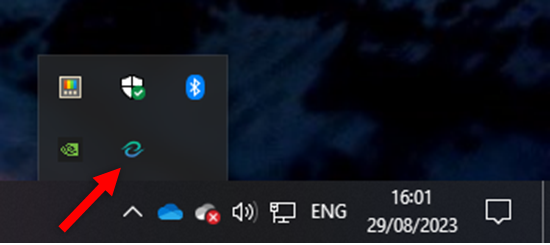Server & UI
Nara are separated into two components:
Server
Nara Server serves as the underlying infrastructure for Nara, facilitating the execution of the tool flow. Importantly, Nara UI is not a prerequisite for utilising Nara Server. Instead, Nara Server can be accessed and remotely controlled via the Nara UI software. This separation of components allows users to interact with and manage Nara Server without requiring direct access to the server's hardware.
How to start the Server
For Windows
- Go to
Start Menu - Search for
Nara - Click on
Narato start the server
Or
(If the user has selected to create a desktop shortcut during installation)
- Go to the
Desktop - Double-click on the
Narashortcut to start the server
For Linux (Ubuntu 22.04)
- Open application menu
- Search for
Nara - Click on
Narato start the server
UI (User Interface)
Nara UI is a web interface that allows users to remotely access and control the Nara Server. Nara Server must be running in order for Nara UI to connect to it.
How to access the UI
On the same machine as Nara Server
The UI will automatically open in the default browser when the server is started. But if the user has closed the UI, they can open it again by:
- Using the shortcut on the application tray:
-
For Windows

- Right click on the Nara icon in the application tray
- Click on
Open Web UI
-
For Linux (Ubuntu 22.04)

- Right click on the Nara icon in the application tray
- Click on
Open Web UI
-
OR
- Opening the following URL in their browser:
http://localhost:19011/
The default port for Nara UI is 19011. If the user has changed the HTTP port, they will need to use the new port number instead.
On a different machine/ remotely
To access the Nara Server remotely from a different machine, the user must note the IP address of the machine running the Nara Server. The user can then access the Nara UI by opening the following URL in their browser:
http://<IP address>:19011/
For example if your Nara Server's IP address is 123.456.789.0, then the URL will be:
http://123.456.789.0:19011/
The default port for Nara UI is 19011. If the user has changed the HTTP port, they will need to use the new port number instead.
By default, the Nara Server can only be accessed within the local network. However, if the user wish to access the Nara remotely over the internet, they need to configure their network to allow remote access.
This configuration involves setting up port forwarding or creating a virtual private network (VPN) connection to establish a secure connection between the user's device and the Nara Server. The specific steps for network configuration may vary depending on the router or network setup being used.
Once the network has been properly configured, users can launch the Nara UI software on their remote device and connect to the Nara Server by specifying the server's IP address or domain name. This allows users to remotely access and control the Nara Server's features and functionalities from outside the local network, provided they have the necessary permissions and credentials.
See Login Area for more information on how to connect to Nara Server.
For the best performance, it is recommended to use a wired connection between the Nara UI and Nara Server.
User might encounter latency and performance issues when connecting to Nara Server remotely via the internet. This is due to the network speed and the distance between the Nara UI and Nara Server.
When connecting to Nara Server remotely via the internet, it is highly recommended to use a VPN connection to ensure the security of the connection.
Communication
When the Nara UI is connected to the Nara Server, the Nara UI will establish a subscription to the Nara Server. This subscription allows the Nara UI to receive updates or changes made to the Nara Server.
Any modifications or updates made to the Nara Server will be automatically sent to the Nara UI. This ensures that the Nara UI remains up to date with the latest information from the server.
Conversely, the Nara UI is also capable of sending any changes made within its interface back to the Nara Server. These changes can include user actions, input, or any other relevant updates.
In cases where multiple Nara UIs are connected to the Nara Server, they will be synchronised with each other. This means that if one Nara UI receives an update from the server, the other connected UIs will also receive the same update, ensuring consistent and coordinated information across all connected interfaces.
The number of Nara UIs that can be connected to the Nara Server is limited by the Nara Server's license tier.